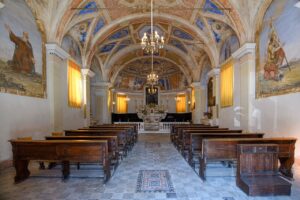The etymology of the name “Basaluzzo” has its roots in the Roman past, where the settlement was known as “Bis Lucus,” or “between the two woods,” a reference to the lush vegetation that once characterized the banks of the Orba and Lemme rivers. Another hypothesis links the name to the existence of a Roman basilica, suggesting a significant religious presence in the area.
The earliest traces of settlement date back to the 1st millennium BC, when Ligurian peoples from Spain settled in the area. By Roman times, the Bis Lucus settlement was well established, on the edge of the territories of the ancient cities of Derthona (Tortona) and Gamondium (Castellazzo Bormida).
During the Middle Ages, Basaluzzo became an imperial fief under the rule of Empress Adelaide. Later, with the birth of Alexandria in 1168, the village chose to bind itself to the new city, following its historical events.
The 18th century was a period of great change: Basaluzzo became part of the French Republic and was the scene of the famous “Battle of Novi” in 1799, which pitted French troops against Austro-Russian forces. With the fall of French rule, the territory was annexed to the Kingdom of Sardinia and, in 1870, finally obtained the status of an autonomous municipality.






Walking through the streets of Basaluzzo’s historic center, one can see the painted houses and wooden gates leading to the medieval castle, dating back to the 15th century and newly restored; opposite is the Church of St. Andrew.
In Basaluzzo there is an important watermill that houses the “Museum of Ancient Crafts” and the “Tamburello Ball Museum”-this game has been, and still is, the quintessential sport of the people of Basaluzzo and neighboring towns.
More things to see and visit:
- The interior of the Oratory of the Brotherhood of St. Anthony.
- The historic hillside area the scene, in 1799, of the “Battle of Novi.”
- The premises of the “Rocca Estate” decorated with frescoes painted by Polish artist Mirette Tanska Cambiaso in the early 1900s.
The “St. Bovo Fair” – Arts and Crafts takes place in the second half of May and is an important market exhibition of the area’s commercial, craft and agricultural activities.
Very important for the agricultural development of Basaluzzo is the “Km. Zero Farmers’ Market” held every Sunday, which involves all agricultural producers in the area, and is visited by many visitors.


















